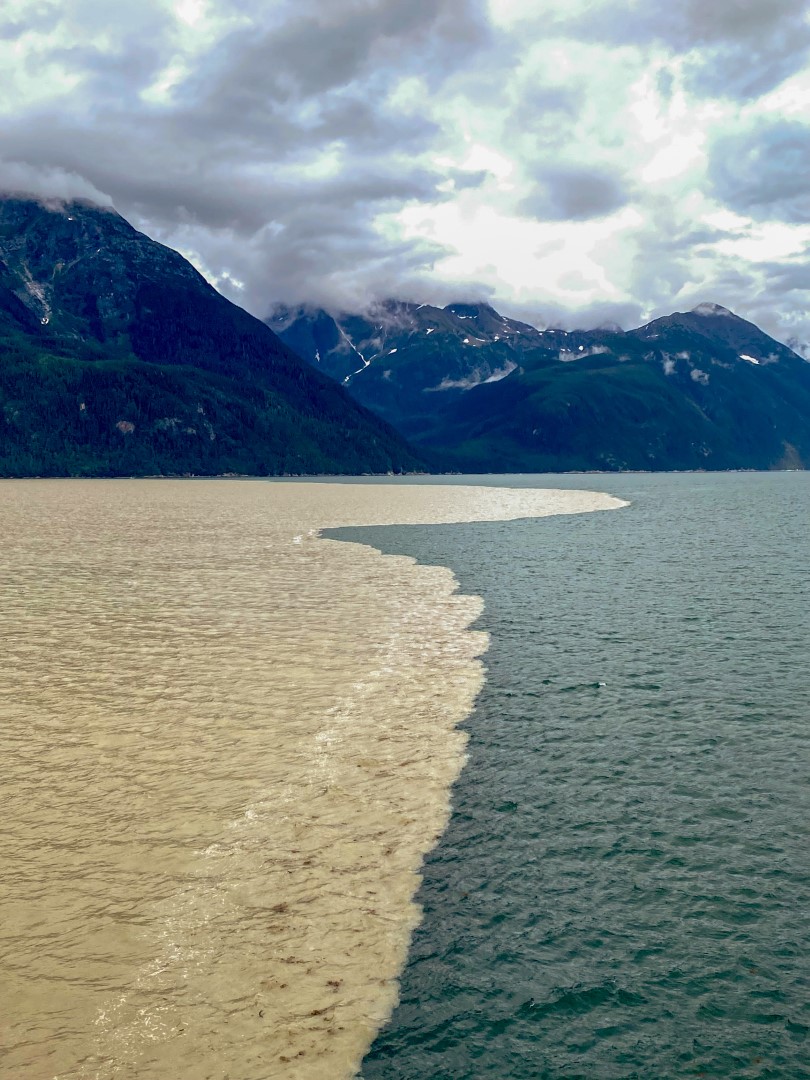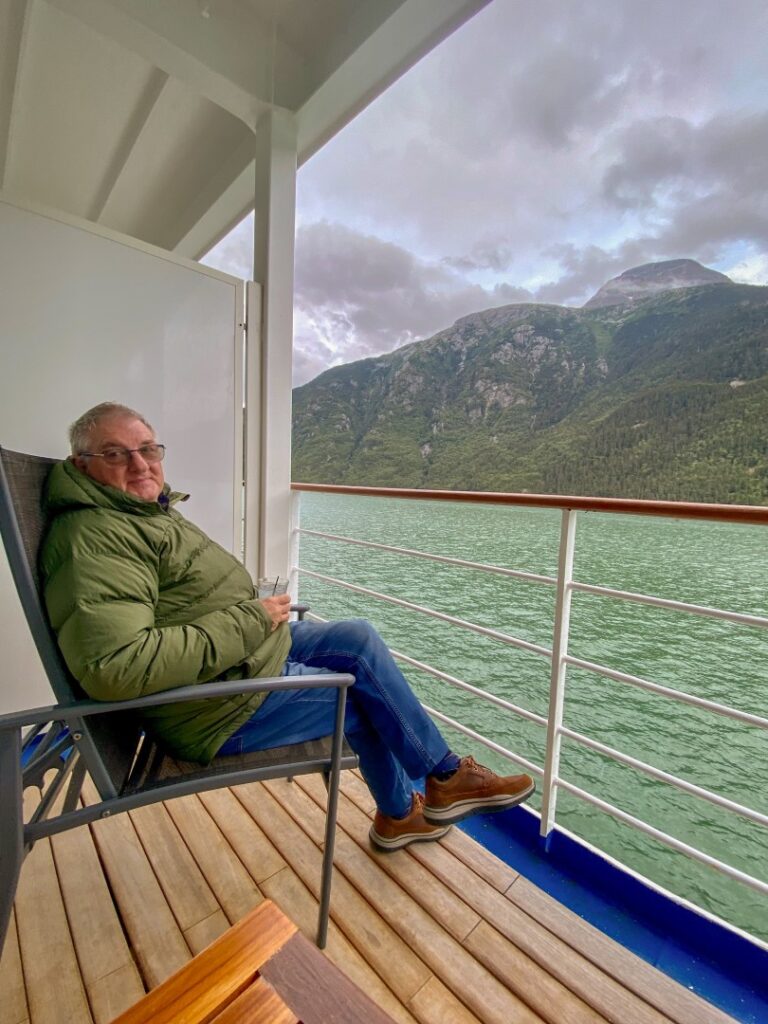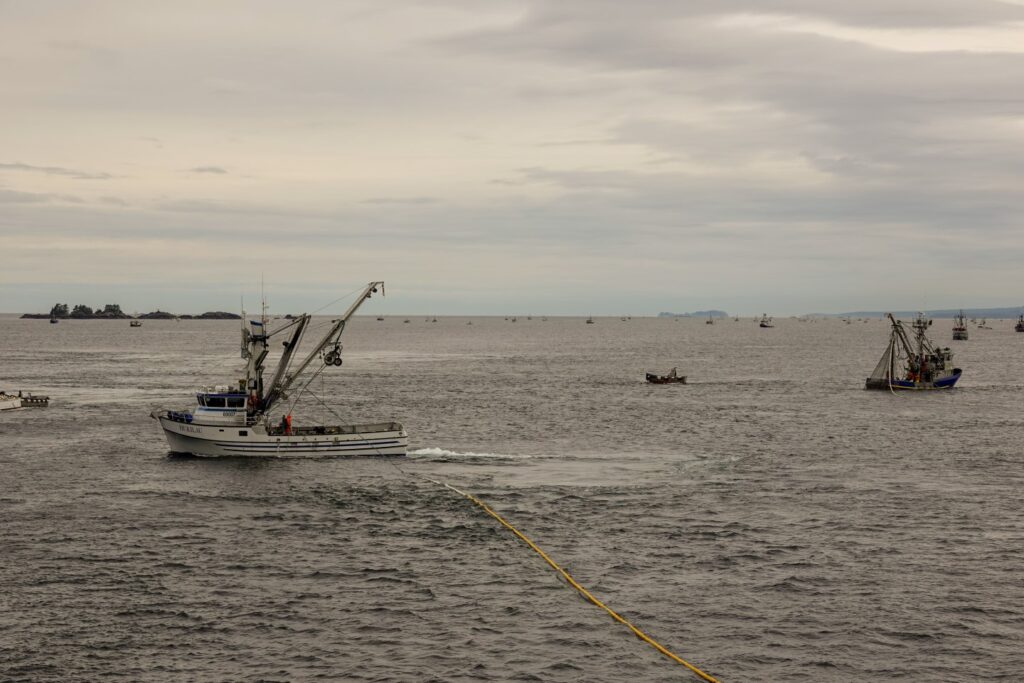We woke to another somewhat drizzly day and the ship was in the process of docking at Skagway.
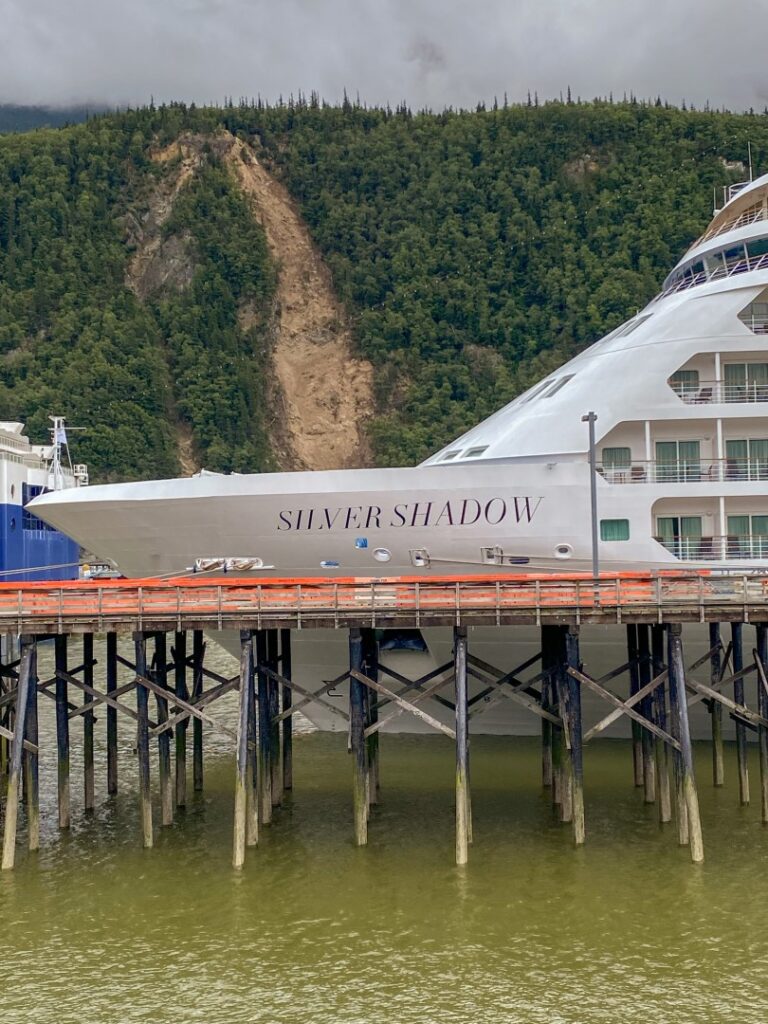
Skagway has been a bit of a headache for the cruise ship industry in recent weeks as a major landslide occurred in the vicinity of the docks and has necessitated alternative arrangements for the time being. We weren’t complaining about our new spot though, we literally stepped off the ship and walked a very short distance to board the famous White Pass and Yukon train.
Apologies for a little background of the railway but I really found it fascinating…..
The railway has it beginnings in the late 1800s with the discovery of gold in the remote Canadian Klondike region some six hundred arduous miles away from Skagway. In July of 1897 the Seattle Post-Intelligencer broadcast the news and the stampede began with tens of thousands of gold crazed men and women steaming up the Inside Passage to begin the overland trek from Skagway and nearby Dyea.
Some chose the steeper but shorter Chilkoot Trail and others the longer, less steep White Pass trail both of which eventually led to the lake and river systems leading to the gold fields. Both trails were harrowing, three thousand horses (able to be used on the White Pass trail only) died on the trail as well as an untold number of aspiring prospectors before they even reached the goldfields.
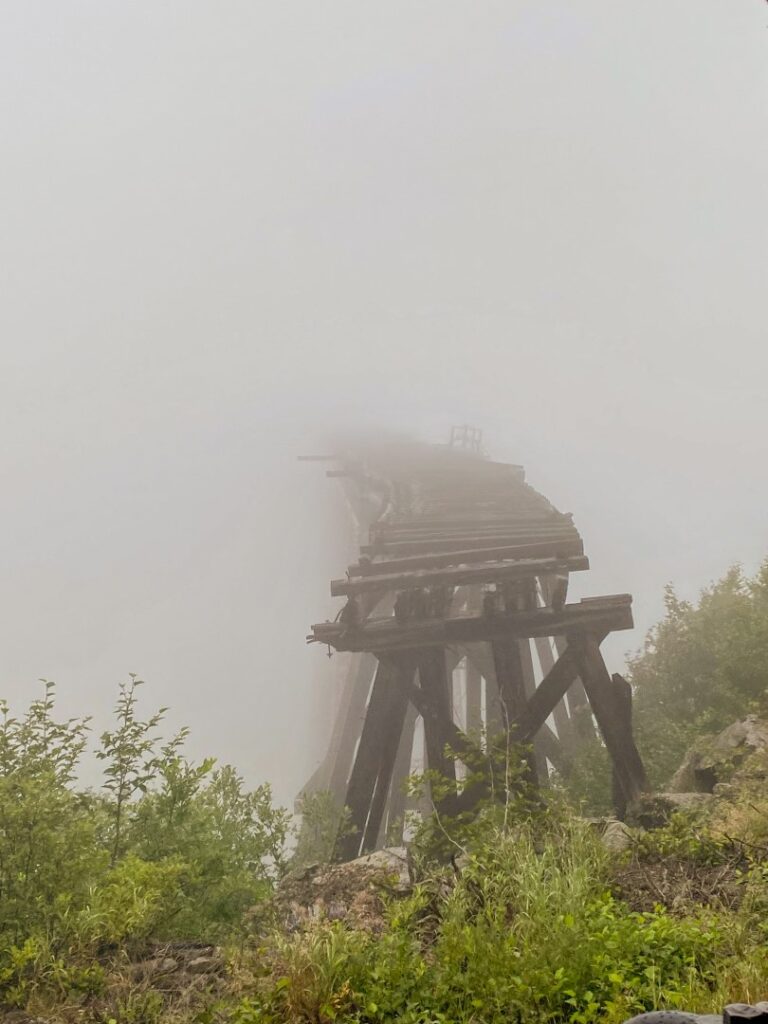
In 1898 two men met by chance in Skagway – Sir Thomas Tancrede representing investors in London and Michael J. Heney, an experienced railroad contractor apparently up for a new challenge! The story goes that they talked long into the night and by morning the idea of a railway became a realistic prospect.
As we climbed the 3,000 feet to the Summit one of the original bridges appeared eerily through the mist and in other places the original foot trail was still evident, affording a tiny insight into the challenges these intrepid pioneers faced.
The line reaches the Summit in just twenty miles with steep grades of almost 3.9% and tight curves which necessitated narrow gauge and meant lower construction costs.
The Summit was reached in February 1899 and by July 1900 they met the crew coming from the north at Carcross. 35,000 men worked on the line, 450 tons of explosive were used and $10 million was spent as they created an engineering marvel.
We thoroughly enjoyed the scenic ride in the spacious old timbered cabins, waterfalls and deep gorges were plentiful and as we neared the summit the cloud closed in dropping the ambient temperature considerably.



In 1982, with plummeting metal prices, the railroad closed but in 1988 reinvented itself as a tourist train.
The town of Skagway itself epitomises ‘frontier’ – it could easily have featured in a wild west film.
Edit: just read that John Wayne’s North to Alaska WAS filmed nearby 😉
Colourful timbered shop fronts make up Skagway’s historical district of about 100 buildings from the gold rush era including surprisingly good souvenir shops, saloons, outfitters and even a (made for tourists) house of ill repute.



The other notable fact about Skagway is that it is one of only three Southeast Alaskan communities that are connected to the road system, (and only since 1978) thereby allowing access to the lower 48 states and Canada and for this reason is also an important ferry terminus for Alaska’s Marine. Fascinating!
It was all aboard at 5 pm so we wandered back and watched Skagway recede from the relative comfort of our balcony.
Next morning we woke to the sight of countless fishing boats and many small islands as we negotiated a path amongst them to the port of Sitka.
Sitka was originally known by the name of New Archangel when it was under the rule of the Russians from 1799 – 1867 and was actually the site of the transfer ceremony for the Alaska Purchase on October 18, 1867.
“Russia was going through economic and political turmoil and decided it wanted to sell Alaska before it was taken over by Britain and offered to sell it to the United States…. The actual purchase and transfer of control took place on October 18, 1867. The cost to purchase Alaska was $7.2 million, 2 cents per acre.” (thanks Wiki)
There are many reminders of its Russian history throughout the town, including the beautiful Cathedral of Saint Michael, along with a strong native Native American presence.

An estimated 18% of Sitka’s population earns at least a portion of their income from fishing and seafood harvesting and processing and that was very evident as we manouevred in to dock, lines were out, nets were being hauled and we could see the catch from our viewpoint on the balcony.
As you can see, the weather was not looking particularly promising but we boarded the bus armed with wet weather gear for our first stop today which was the Alaska Raptor Centre.
The Raptor Centre is Alaska’s only raptor (bird of prey) rehabilitation centre and their mission is to “promote and enhance wild populations of raptors and other avian species through rehabilitation, education and research.” We spent a relatively short time here, hearing about their work and strolling by cages housing injured birds and long time residents.



Our next stop was to the Fortress of the Bear which was established in 2007 to offer an enriching long term home to orphaned bears which cannot be released into the wild after being reared by humans. They have eight bears in residence and whilst my bucket list adventure was still to come, (with wild bear viewing planned post cruise) these bears were extremely cute and very entertaining! They are housed safely in huge concrete ‘tanks’ left over from a fish cannery business and well suited for this purpose, not as good as their wild habitat obviously but the alternative is to be shot which is what still happens to most orphaned bears in Alaska.






The centre relies heavily on the tourist dollar for running costs and so like many other businesses in this part of Alaska have been hit hard by the pandemic.
We next visited the Sitka National Historical Park which is set on 122 acres of coastal rainforest and preserves the site of a battle between Russian traders and indigenous Kiks.ádi Tlingit. Unfortunately both time and the weather were against us and we only managed a very short walk in this beautiful area which is dotted with totem poles amid towering spruce and hemlock.
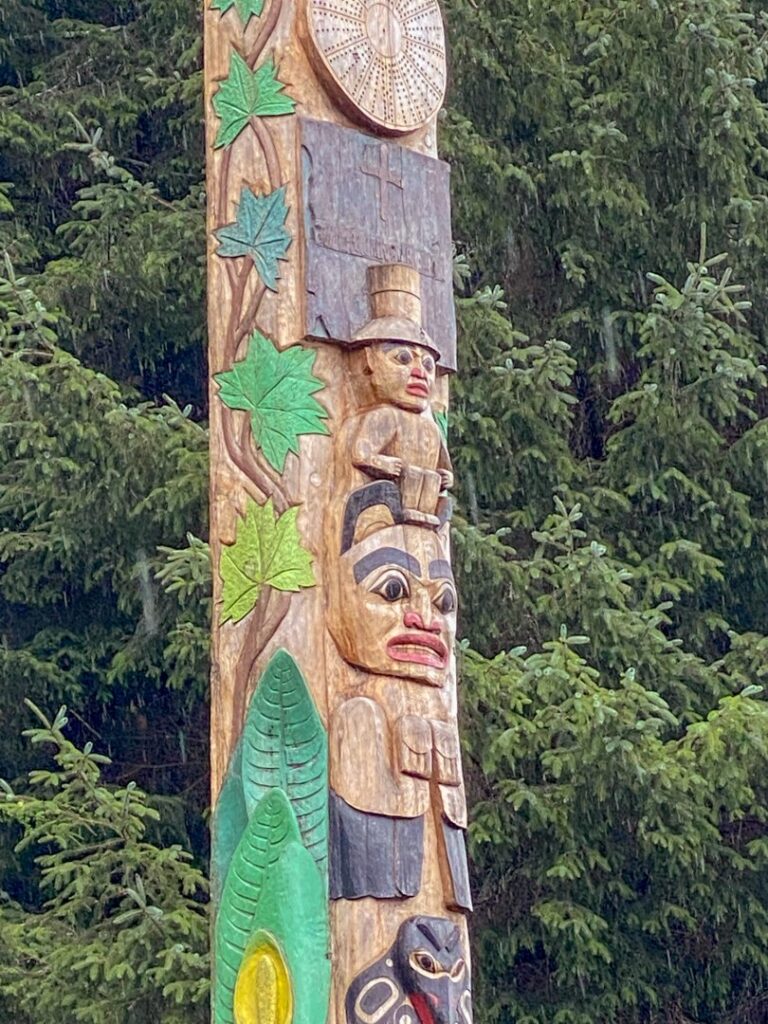




By the time we had a late lunch (a pound of very hot wings) in a local pub, the rain was settling in and we decided to catch the next tender boat back and call it a day.
A whirlwind tour of Sitka has reinforced a growing awareness of the courage, tenacity and ‘never say die’ attitude of the people who settled these remote areas and survive in this isolated part of the world today as well as the Native peoples who have not only dealt with the enviroment but the invasion of it by many groups of white people over the centuries.

